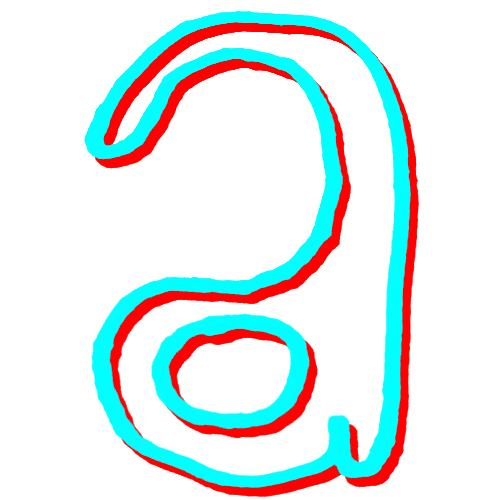When you get someplace new, learn to read the landscape like an alphabet
This essay is developed from the written score for a lecture by the same title delivered over Zoom in November 2023, and an earlier version of this lecture given as a research talk in the School of English, Drama and Film at University College Dublin. The images included were projected during the 2023 lecture, though not all images that appeared during the lecture appear in this publication of it. All uncited images are my own.

The sentence when you get someplace new, learn to read the landscape like an alphabet is a frame for what I make: books and objects, performances and texts. It is also a way to say how I try to be in the world: how I try to be looking, how I try to be finding out how I know what I know, how I try to be paying attention to the ground of my thinking. This sentence indexes a central fact of my life, which is: thinking and being are not separate. What I pay attention to results not only in art but in the life I make.
In 2018 I gave up my right to remain in Belgium and returned, for the first time since my early 20s, to be a full-time and permanent resident of the country where I hold citizenship, the United States. Leaving Belgium meant leaving the bodyplace and lawplace I had occupied—immigrant in a Belgian context, an English context, and a French context—for more than a decade.It also meant leaving a specific geographical place: a small piece of land in rural Flanders.
In Belgium I experienced two things intensely and close to home. One was the power and pervasiveness of the state in the life of immigrants, a continuous reminder that I was not in the right place and that my place, such as it was, could at any moment be revoked. The other thing was the pleasure of making a large garden out of a piece of land that had been covered in lawn. Building the garden, I would forget my fear of the border agent and the police—a forgetting that was broken when, for example, the local police arrived for a spontaneous check of my papers and living situation. Nevertheless, planting, tending, weeding, harvesting gave me an experience of time and space that was different to the wary endlessness and unplacedness of being-in-migration.
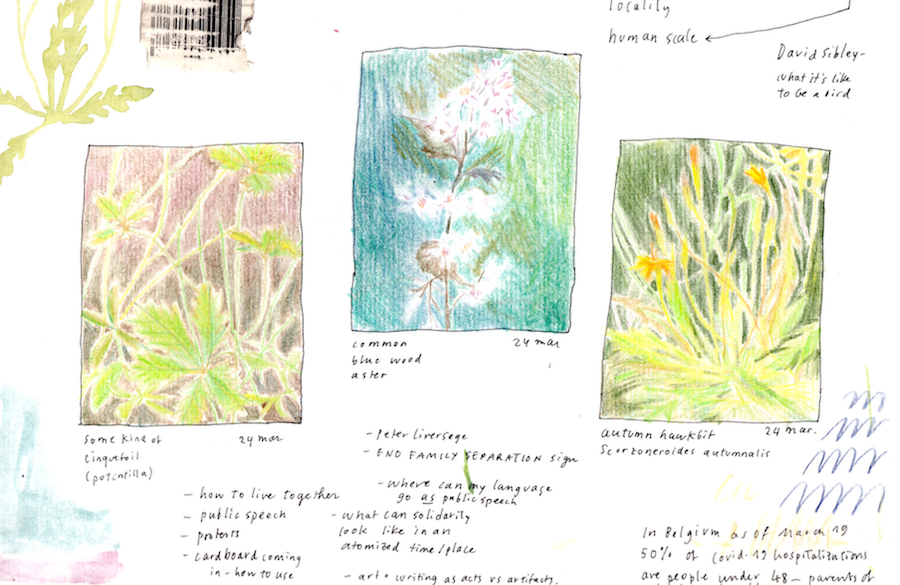
In both migration and poem-making, I have found myself in what the poet Fanny Howe calls “bewilderment.” (All of the quotations of Howe here are from her essay “Bewilderment”, which is in her collection The Wedding Dress: Meditations on Word and Life, published by University of California Press in 2003.) For Howe, bewilderment is “a complete failure in the magnet, the compass, the scale, the stars and the movement of the rivers” which “is more than getting lost in the woods.” Bewilderment is “an enchantment that follows a complete collapse of reference and reconcilability.” Howe's bewilderment is geographical and linguistic. It matters to me that Howe considers bewilderment “a way of entering the day as much as the work...a poetics and an ethics”. She means, bewilderment has to do with what is possible in art, and what is possible in life. I held onto “Bewilderment” when I entered migration, although it was only in retrospect that I realized I was holding onto this essay for dear life. It made sense of the unmaking of ‘sense’ (meaning a fixed order of the universe) I was experiencing.
In migration, the world I understood broke down. The most basic assumptions I made, for instance about where in a grocery store I would find sugar, were false. Larger assumptions I made, for instance about my ability to cause others to understand my intelligence and sense of humor through language, also failed. Assumptions I did not even realize were assumptions, like my assumption that other human beings would without hesitation be able to recognize my equal humanity, or the assumption that I would be able to give name to what I was seeing when I walked through a field or along a river, likewise failed. A “complete collapse of reference and reconcilability”.
This was a gift: it taught me to see the constituent parts of things—elements, letters, gestures—as things in themselves, to be questioned, learned from, thought with, critiqued, put to use, recombined.... It taught me that the ground of thinking is the ground, and that nothing is beneath notice.
Migration
and poetry are alike in that both are about belonging as a process and not a fact. Not: you belong here, you don't (the job of the border agent), but: arriving in a place
I have no grammar for, I must attend to what is there in order to learn to
understand at all. This isn’t belonging via claim-staking, but belonging by coming to a living and changing
understanding of where and to whom, with whom, among whom one has arrived. A
belonging that is made as one goes, with the who-all-else of who-all is there.
It takes eyes to see and ears to hear the who-all-else;
eyes and ears like the child who only after
weeks or months may understand that the beautiful
construction of three straight lines makes ah, uh, æh, an A.
![]()
Belonging to the whom and the where, all the way down to the ground of preposition and article, all the way down to the ground of alphabet of plant, insect, rodent, bird, dirt, gravel, underground movement of water. You can take these metaphorically, though I mean them literally as well.
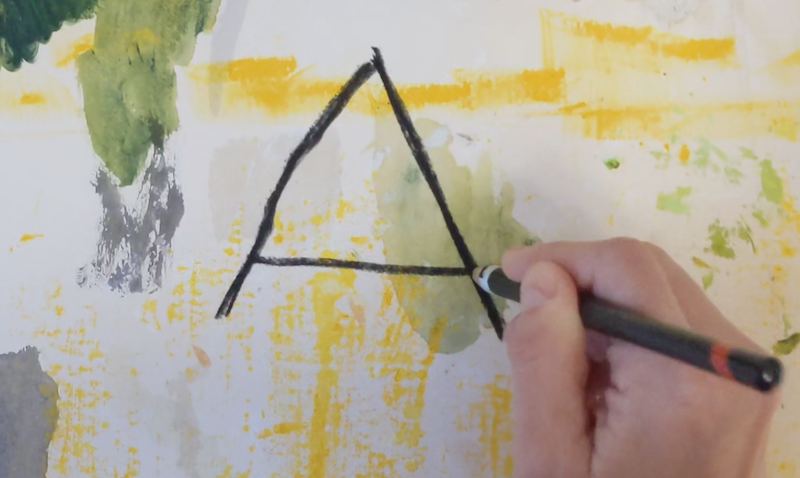
Belonging to the whom and the where, all the way down to the ground of preposition and article, all the way down to the ground of alphabet of plant, insect, rodent, bird, dirt, gravel, underground movement of water. You can take these metaphorically, though I mean them literally as well.
I left Belgium when I was offered a job at a small, underfunded, rural, public university in the northeastern US. I made the decision to leave the garden and my migration because I love to be in rooms with others, thinking about writing. Three years into my contract, in March of 2020, the world changed substantially. You lived this moment of change as well. Because the thinking I do happens in the world, and the conditions of my life affect how and what I can think, as well as how what I can think presents itself to me, this change affected how I work, how I think, what it is possible for me to think. Some of the ways this change affected my life I share with others, including you. One change particular to my life (writing, being, thinking) was that the visiting position I held at the small, underfunded, rural public university was not extended, and so the more-or-less stable future I had envisioned became completely contingent. The university gates closed to everyone in some ways, and closed in other ways specifically to those of us who did not have permanent contracts or tenure.
Again I was bewildered: the future was opaque. The job market plunged. The rent continued to be due. The rest of the semester waited to be taught. In the first months of the Covid-19 pandemic I waded through the bewilderment of impending joblessness, incomelessness, houselessness, gardenlessness, contactlessness. The rivers of my life as I had understood it left their courses toward the future and my compass spun.

When the university shuttered, it was a shock of nonbelonging I recognized but had not anticipated in that landscape. Suddenly I was outside the institution, in literal and figurative ways. I began to walk every day as a way to reset my compass, or, really, to understand the compass that the world had newly set for me.
We were living in an upstairs apartment in a house. We had no green space, outdoor space. We could see the landlords' extensive gardens from our windows but we could not enter them. Not long after I began walking every day, I became aware of plants growing outside the bounds of gardens: in cracks in the pavement, in walls, along road margins, on graves, poking through fences. I photographed, collected and recorded these plants from the public spaces that I came to think of as my garden. Many of the plants I recorded on those walks had been unknown to me, unnoticed by me, until I was faced with my exclusion from gardens and the university, and began to walk and look in my bewilderment.
This exterior space, the space I came to think of as my garden, inverted the form of the garden as I had always understood it. Instead of an enclosed space designed to keep not-garden out, my garden was all not-garden. It was the public space demarcated by the outsides of walls, hedges, and fences around private yards. It was full of what was unwanted or intended for exclusion.
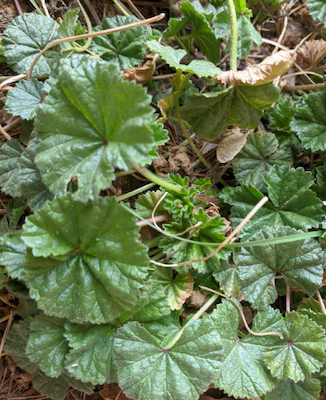
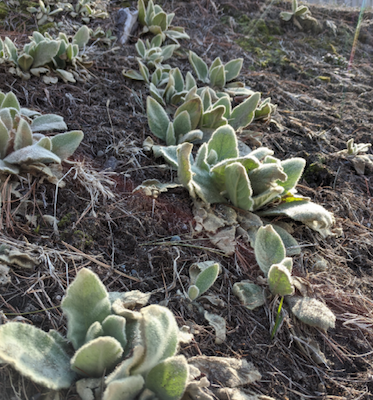
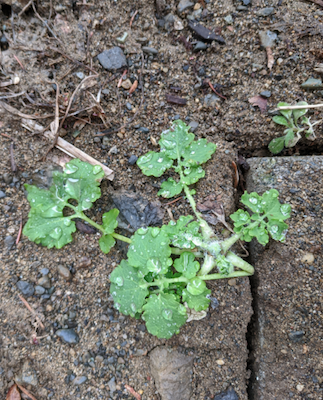
On these walks, I began to think about the shape of the garden as a way to think about belonging and legitimacy. Garden and yard come from the old English word ‘garth.’ Garth means an enclosed area. The word garden may call up images of open green to us now, but enclosure is implied in its history. We can trace the form of the enclosed garden back to the earliest formal gardens, which come from the Islamic world. The word for these enclosed gardens, from Old Persian, is pairidaêza. This word migrates through Greek and Latin into our English and becomes the word paradise. The wall is intrinsic to the garden, as it is to paradise. It tells us where we are, relative to what's inside, and reminds us who (and what) is not included.

An interlude, now, between the archive and the crack in the sidewalk; between the expulsion from the garden and the gates of the institution closing in March 2020.
My writing
lies between fields. On one hand there is a well of scholarship in its conventional
sense, especially some kinds of philosophy, part of my education. On another
hand there is a field of ‘something else’—the ‘something else’ of writing and artmaking. Across the
fields of my training, my interest, and my attention, I have learned to insist
on the most simple-seeming questions as a way to come to knowledge: for example,
questions like what is here? Who else is here?
How are we here? How are we here together? What are the conditions of our being
here? How else could it be? What does it mean to be here, together, in this
way?
I have come to write in a way that requires me to attend to concentric circles of containment, relation, and embeddedness—material, social, ecological, bodily, conceptual—even as I try to understand a being, image, idea, or object in front of me. How is it that we are here together? In the end I find I cannot make my work without acknowledging that these ways of being in the world—of going to find out, of coming to knowledge, of encountering others (human and not)—overlap, and that the overlap, the relation I am always in, is where thinking happens for me.
I have come to write in a way that requires me to attend to concentric circles of containment, relation, and embeddedness—material, social, ecological, bodily, conceptual—even as I try to understand a being, image, idea, or object in front of me. How is it that we are here together? In the end I find I cannot make my work without acknowledging that these ways of being in the world—of going to find out, of coming to knowledge, of encountering others (human and not)—overlap, and that the overlap, the relation I am always in, is where thinking happens for me.
In June 2021 I was a fellow (thank you to Nan and to all at the AAS!) at the American Antiquarian Society in Worcester, Massachusetts, doing research for a book about plants and nations, gardens and migration. I spent hours filling spreadsheets with plants that appeared in 18th- and 19th-century gardening catalogues and manuals. In the reading room at the AAS, I replicated the form of the walled garden for myself. I rendered (real) thought the preserve of the archive and the spreadsheet. I forgot that thought is the preserve of everything; that “each mortal thing,” in Hopkins’ words, “does one thing and the same:” speaks and spells itself.I had forgotten, for a while, sitting in that intimidating chair, that the world is a spelling place; all the world.

In the evenings, as I walked through the neighborhoods around the AAS, I tried to feel toward a form to hold my thinking about these plants, their names, their voyages, and their implications for the places they ended up. It occurred to me that I could not write this work either without acknowledging my being somewhere; I remembered that the whereness of the act of thinking is specific and meaningful. Where changes what and how. Here I am. Here we are. Who is with me, and where are we?
One evening, the air was hot and humid. There was a lot of traffic. There was an elderly man who panhandled daily on the corner by the archive. There were huge clouds, seeming like a storm might come. As usual, I watched the ground as I walked, looking for plants in places they were ‘not supposed to be.’

In the reading room, I had found the plants I saw in sidewalk cracks (like the purslane, above) named as valuable inclusions in planned enclosures. Plants that had been cultivated specimens or adopted edible or medicinal companions in colonial gardens of the 18th and 19th centuries reappeared in my 21st-century surroundings, now unwanted or beneath notice, at best ignored and at worst seen as a threat. It is probably clear by now that I like those plants in part because I have found myself—as an immigrant, as a scholar and writer lacking permanent institutional affiliation, as a writer whose work crosses disciplinary borders—also in places I feel I am not supposed to be.
I began to think about these plants as border-crossers, and this made me think about the borders I had written into my research proposal, the borders written into the world I lived in, and the borders I experienced in and on my body: The borders between new and old worlds; the borders between ‘indigenous’ and ‘exotic’ plants, between ‘native’ and ‘invasive’ plants, between ‘exotic’ and ‘invasive’ plants, between ‘plant’ and ‘weed’; the borders I had crossed with one passport or another; the borders I experienced alongside others in migration offices; the borders I witnessed differentially appearing on other people around me, especially people of color in Europe, especially Black people in Europe and the US, especially Spanish-speaking people in the US, especially apparently Muslim people in the US and Europe, especially people in Europe whose passports required expensive visas with short durations, especially people without papers in the US and Europe, especially poor people everywhere I went; the border between me, with my American Antiquarian Society lanyard nametag and bookbag walking down the sidewalk, and the man panhandling on the corner each morning; the border between the cool, quiet reading room and the heat, humidity, noise and overwhelming visual presentness of the world outside its door; the borders I push against, capitulate to, or create, via my own belief in them, between scholarly knowing and artistic knowing, or between this place and that place, using the word ‘nation’.

(A kiwi grows in Amsterdam.)
The movement of plants across garden walls helps me understand the falseness of other boundaries, including national boundaries—those fantasies that so much money and so many guns and so much razor wire go into maintaining.Believing in the abolition of borders along geopolitical frontiers, I have come to see that I have to extend this to trying to abolish them in my thought and ways of working. I have to understand in a sincere and deep way that the purslane in a crack and the man panhandling at the corner—his name was Russell—have as much to teach me about what I am trying to find out as anything else. I have to understand in a sincere and deep way that the more I feel secure in knowing how to make a poem, the more I should return to those fundamental questions of who, and who else, and where, and how, and what else am I missing.
Sometimes, when the work of writing or thinking appears in front of me with a capital letter made in an imposing hand, I must be taught again to look through the scrim of language to the crabapples in the gutter, or to the way it feels to peel far-right stickers off a lamppost to find the Poem. Sometimes, when I feel the pressure of the institution, even the one I love, even the one I build myself, to close the door, I have to be reminded of what bewilderment taught me: that I should turn, and crouch, and see from closer to the ground who else is here. That the world spells itself in its own ways, and not only using the names I know.
The elements of the world remind me there are billions of ways to do the work of thought.
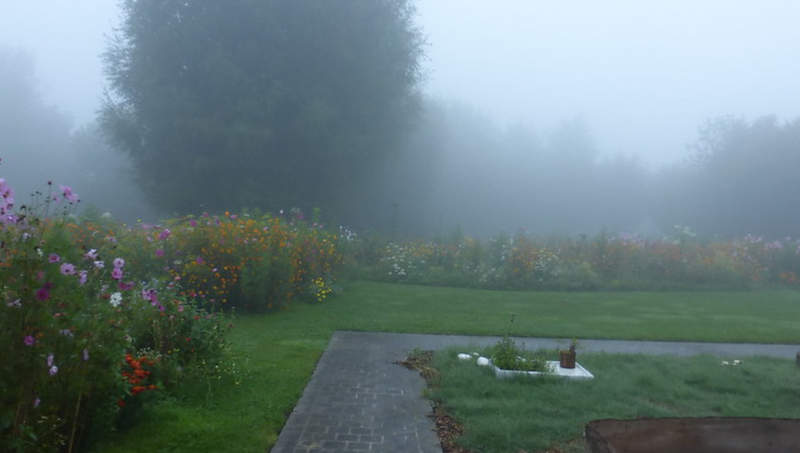
My garden in Belgium was never a purely Belgian place anyway, composed as it was of plants that were considered native because their presence in the landscape predated 1700, and plants so frequently seen that to tell anyone they had come to Belgium from far away was to engender disbelief. I have known ever since I began to make a poem or a garden that the metaphor of paradise as a walled place is faulty; that the boundaries around word and world are porous. There I was, for one thing, a naturalizing transplant, changing the landscape. And more: The quiet of my rural garden with its flowers, fruit trees, vegetables, and meadow grass, which seemed sometimes so fully to remove me from the world of police and border agents, was frequently raked by the sonic boom of Belgian air force jets on their way to Syria.
I am trying to articulate the often invisible wall around the garden—around the institution, whether poetry or philosophy, archive or conservatory—how it shapes what is inside and what is out, and how it conditions me to think about inside and outside as norms of thinking at all. So what would it mean to write without the walled garden in my mind? To learn an orthography of place as relation and an orthography of infinite and infinitesimal belonging? To understand poem-making as intellectual work, and visual work as poem-making, to understand weed as co-constituent of garden and migration as a moving belonging that crosses borders not to reify them but to refuse them, the fact of the borderless world to which other migrations testify? To make poems that would be the work of spelling myself with and in the world of beings and objects all around me. Return me, newly, each day, to the discarded and waste, the unwanted, the ordinary, to an enchantment that thoroughly stops clock, demagnetizes compass, inverts the known world and becomes a way to enter both day and work.
Attending to the ground of thought, I learn that weeds make a landscape the way that letters make an alphabet. I understand that the wall around the garden and the wall around the institution are permeable: that wind, water, seeds, birds, humans, rodents, spores, ways of being cross these boundaries. Weeds remind me of my belief in the boundary between desirable and undesirable, thinkable and unthinkable. They cross that boundary: historically, materially—what I found in the archive was evidence of their border crossing. My teachers, weeds appear everywhere in the world’s grammar.
To think about a landscape alphabet is to turn and re-turn simultaneously in two directions, and to insist on my own bewilderment. I turn my head from whole words, from phrases, clauses, sentences, paragraphs, poems, and force myself to see the letters, ask what shapes they make and how to make them. I do this over and over so that turning becomes the first movement I make when I try to understand. Bewilderment turns me from the neat rows of status objects—the best magazines, the most important publishers, the dinners and the names dropped into conversation—and makes me hold on to scraps, garbage, plants growing from cracks in the walls.
In bewilderment I begin to move my mind and eyes, my hands and feet, my entire thinking self toward the smallest things that make a place itself and toward the most elemental parts of language, the parts I may not think about but that make my meaning go. I want to be bewildered by them, so that I then may be able to ask questions that do not take the ground for granted, that do not even take what’s on the ground for granted. To learn a landscape like an alphabet means letting it estrange me from my own assumptions about what matters and what does not, letting it remind me that bewilderment is a way to “enter the day as much as the work.”
Learning to read again each time, each time with an eye to the clouds and the bread thrown down for pigeons, with an eye to the structure and the form and an eye to the shape of the letters, I learn to make a writing that is walking and a looking that is my life.
Thank you for being here.


